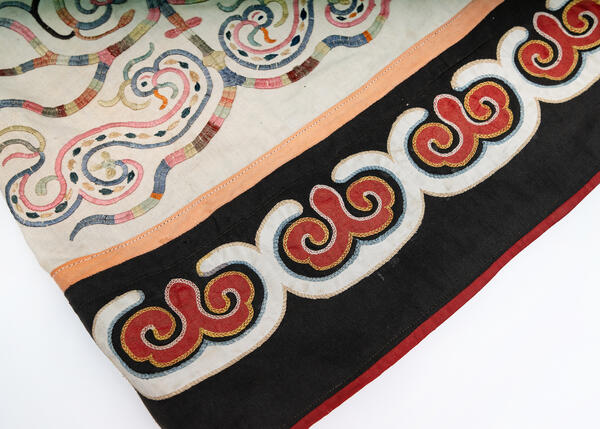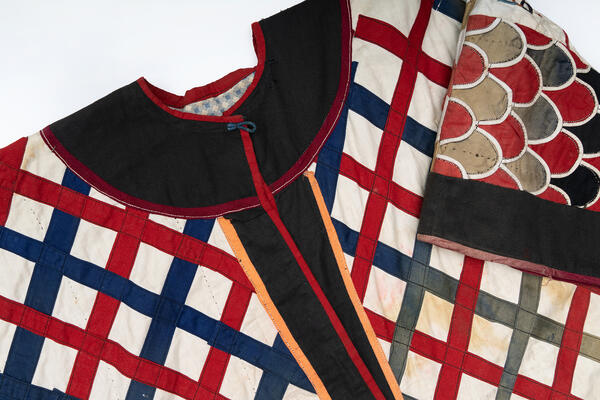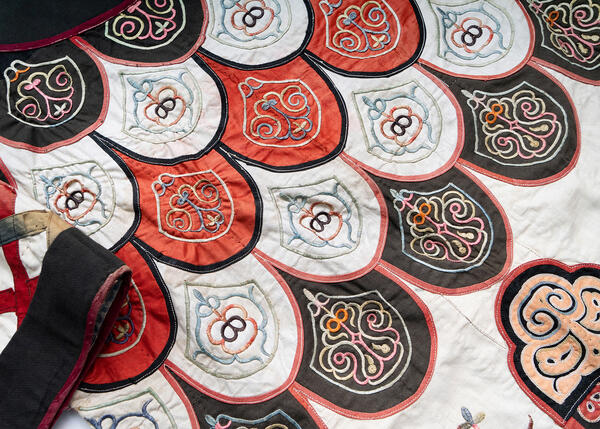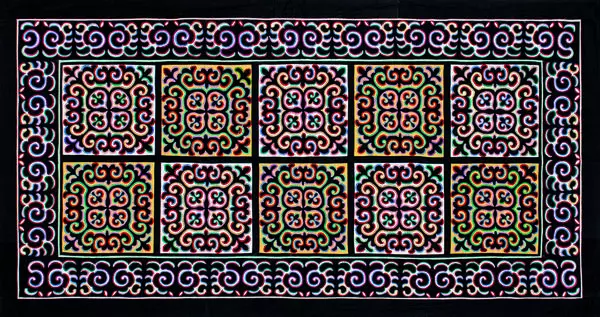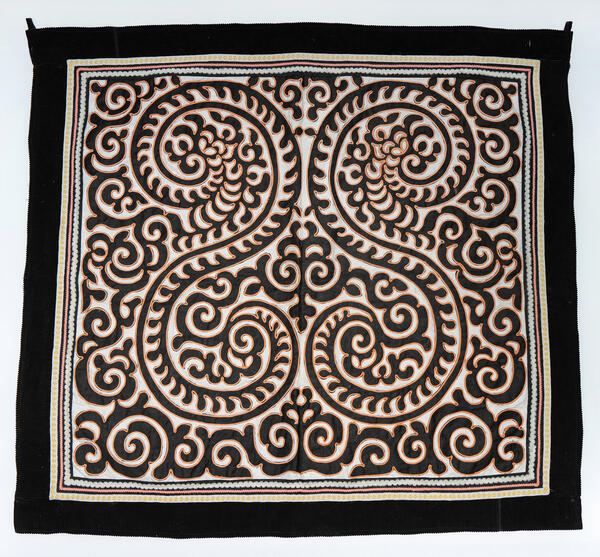The sike wedding robe was sewn in the middle of the 20th century from white cotton fabric lined with white and blue fabric with a geometric pattern. In the cut, this kimono is open at the front, has a shoulder seam, short sleeves, a slit of 4.2 centimeters.
Master Chikue Zolongovna Kile decorated the front part with an applique in the form of criss-crossing black and blue stripes 1.8–2 centimeters wide. There is a more complex pattern on the back. On top there is an application in six rows depicting scales, which are filled from the inside with an ornament in the form of closed curls, spirals and circles — symbols of the origin of a human being.



